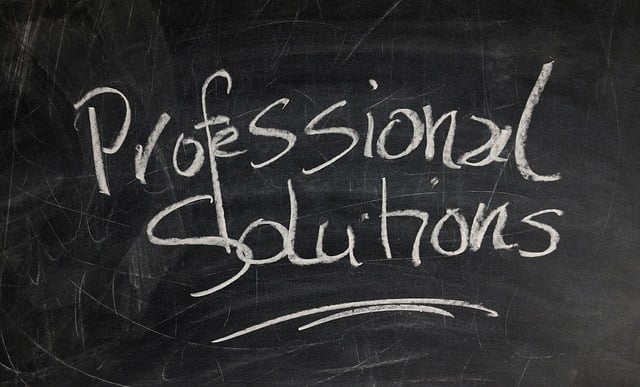Professional Liability (Errors & Omissions, E&O) insurance protects businesses from financial losses due to professional negligence, covering legal fees, damages, and settlements. In a risky business environment, it's crucial for mitigating risks, managing claims, and maintaining operations during disputes. When selecting a policy, assess industry-specific needs, review exclusions, and consult experts. Understand common limitations like exclusions for intentional acts, criminal offenses, and known risks. Real-world cases highlight the value of E&O coverage in preventing significant financial losses. Effective risk management includes internal controls, staff training, compliance with standards, and staying informed about industry trends.
In today’s competitive business environment, having robust Professional Liability (E&O) coverage is no longer an option—it’s a necessity. This comprehensive guide explores the intricate world of E&O insurance, equipping business owners with essential knowledge to navigate potential risks. We delve into key aspects such as understanding professional liability, the evolving business landscape’s demands, and how to tailor policies to suit unique operational needs. By addressing common exclusions and learning from real-world claims, you’ll gain strategic insights for effective risk management beyond insurance alone.
Understanding Professional Liability: What It Covers and Why It Matters

Professional Liability, also known as Errors & Omissions (E&O) insurance, is a crucial coverage for businesses, protecting them from financial loss due to professional negligence. It covers a wide range of incidents where a business fails to meet the standard of care expected in its industry, leading to legal liability and financial consequences. This includes instances such as giving incorrect advice, failing to complete a service, or misrepresenting product information.
Understanding Professional Liability is essential for business owners as it safeguards their assets and reputation. By ensuring this coverage, businesses can manage potential claims, legal fees, and damages, allowing them to maintain stability and continue operations without significant disruptions. It fosters trust with clients and partners, demonstrating a commitment to excellence and accountability in professional services.
The Need for Comprehensive E&O Coverage in Today's Business Landscape

In today’s dynamic and highly competitive business landscape, companies face an ever-growing array of risks and liabilities. From product defects and professional negligence to errors in judgment, the potential for exposure is vast. Comprehensive Professional Liability (E&O) coverage emerges as an indispensable shield for businesses, offering protection against financial loss and reputational damage stemming from such incidents. As legal and regulatory environments evolve, ensuring adequate E&O insurance becomes a strategic necessity.
Businesses, especially those providing professional services, must recognize the value of robust E&O coverage. It not only shields against direct financial losses but also enables businesses to maintain their operations during legal disputes, covering defense costs and potential settlements or judgments. This proactive approach allows companies to focus on growth and innovation while mitigating the risks inherent in modern business practices.
Key Components of Effective Professional Liability Insurance

Professional Liability insurance, also known as errors and omissions (E&O) coverage, is a crucial component for any business seeking to mitigate risks and protect its financial health. This type of insurance safeguards against claims arising from professional negligence, offering vital protection for businesses across various industries.
The key components of an effective Professional Liability policy include comprehensive coverage for legal expenses, damages, and settlements resulting from professional mistakes or omissions. It protects businesses against a wide range of potential risks, such as errors in financial reporting, faulty product development, or inappropriate advice given to clients. Additionally, these policies often include provisions for incident response services, helping businesses navigate the aftermath of a claim efficiently and effectively.
How to Choose the Right E&O Policy for Your Business

When selecting an E&O policy, businesses should start by evaluating their specific needs and risks. Consider the type of services your business provides—whether professional services, consulting, or healthcare—as different industries face distinct liability concerns. For instance, a law firm dealing with complex litigation will have different exposure compared to a tech startup offering software solutions. Understanding these nuances is key to choosing adequate coverage.
Next, assess the potential financial impact of errors and omissions. Evaluate past incidents, industry trends, and your business’s size and revenue. Higher-risk scenarios may require more substantial limits and broader policy language. Additionally, review exclusions and limitations within policies, ensuring they align with your operations. Seeking expert advice from insurance brokers or professionals in your field can aid in making informed decisions regarding the right Professional Liability E&O policy.
Common Exclusions and Limitations to Be Aware Of

When considering Comprehensive E&O Coverage for your business, it’s crucial to understand the common exclusions and limitations within policies. Professional Liability, a key component in many business insurance plans, typically covers damages arising from negligence or errors in service. However, it often excludes intentional acts, criminal offenses, and certain types of damage, like those caused by war or nuclear incidents. These exclusions vary across providers, so careful review is essential.
Beyond Professional Liability, other common limitations include restrictions on coverage for ongoing problems, known risks, or events that occur outside the policy period. Some policies might also cap the amount of compensation payable per claim or per year. Being aware of these limitations ensures your business is adequately protected and helps you make informed decisions when selecting an E&O insurance plan.
Real-World Examples: Successful Claims and Their Impact

In the dynamic landscape of business, professional liability is a cornerstone of risk management, protecting professionals from claims arising from negligence or errors in their work. Real-world examples highlight the profound impact of comprehensive E&O (Errors and Omissions) coverage. Consider a law firm that negligently files a lawsuit on behalf of a client, leading to significant financial losses for the client. A thorough understanding of professional liability would have guided them to ensure proper documentation and legal strategy, potentially avoiding this costly mistake.
Another instance involves an architect whose design plans contain critical errors, resulting in structural failures and injuries. Adequate E&O coverage could have provided financial security for the architect during the ensuing litigation, allowing them to focus on learning from the mistakes rather than facing insurmountable legal bills. These scenarios underscore the necessity of robust professional liability coverage to safeguard businesses from unforeseen legal liabilities.
Strategies for Risk Management Beyond Insurance Coverage

Risk management is an integral part of any successful business strategy, and it goes beyond simply having comprehensive Professional Liability insurance coverage. Businesses should adopt a multi-faceted approach to mitigate potential risks and ensure long-term sustainability. One effective strategy is implementing robust internal controls and procedures, ensuring that all operations adhere to legal and ethical standards. Regular staff training on risk awareness and compliance can significantly reduce the likelihood of errors or omissions that could lead to costly lawsuits.
Additionally, staying informed about industry trends, regulatory changes, and emerging risks is vital. Businesses should foster a culture of continuous learning and adaptation, enabling them to anticipate and address new challenges proactively. Regular audits and reviews of existing risk management practices can identify gaps and areas for improvement, ensuring that the company remains protected against evolving threats in an ever-dynamic business landscape.
